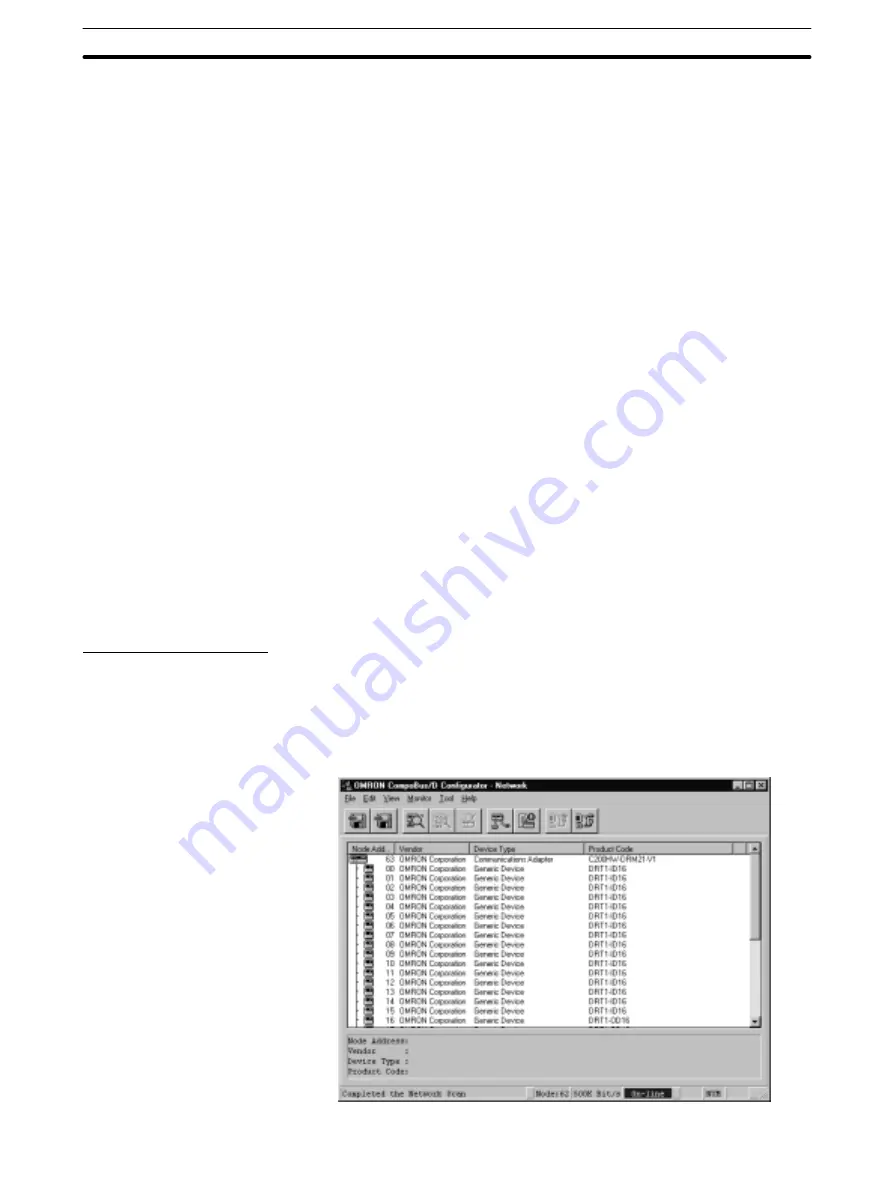
1-1
Section
Introduction
5
Either of the following methods can be used to create the Master parameters
(the Master Unit’s device parameters).
Create Master Parameters:
The user allocates remote I/O at any location for each Slave.
Master Parameter Wizard:
The user follows an interactive setting program to allocate remote I/O to
Slaves in node address order.
The CompoBus/D Configurator’s “Master Parameter Wizard” allows the user to
create Master parameters simply by following the wizard’s setting directions.
When there are two or more Masters in one network, set the Master parameters
for each Master.
Note The CompoBus/D Configurator cannot be used to make Master settings for
Masters made by other companies and other companies’ configurators cannot
be used to make settings for OMRON Masters.
Currently there aren’t parameters to be set for OMRON Slaves, but some Slaves
made by other companies require specific device settings. These Slave param-
eters can be set by acquiring an EDS file for Slave settings from the manufac-
turer or reading parameters from a Slave in the network. It is also possible to edit
Slave parameters and transfer the data to and from files.
Note When the CompoBus/D Configurator is installed, EDS files are simultaneously
installed for devices made by other companies that are registered with the
ODVA.
It is necessary to set the node address (MAC ID) and communication rate
through the network for some Slaves made by other companies. These Slaves
can be connected to the CompoBus/D network with the CompoBus/D Configu-
rator.
Monitoring Functions
This function reads the network configuration file information as well as informa-
tion on the devices (Masters and Slaves) properly connected to the Compo-
Bus/D network and lists this information in icon format. Each kind of device has a
different icon, so the network configuration is plain to see.
The CompoBus/D Configurator’s main display is used to display the device list.
Slave Parameters
(See page 89 or 91.)
Node Address/
Communication Rate
(See page 88.)
Display Device List
(See page 54.)















































